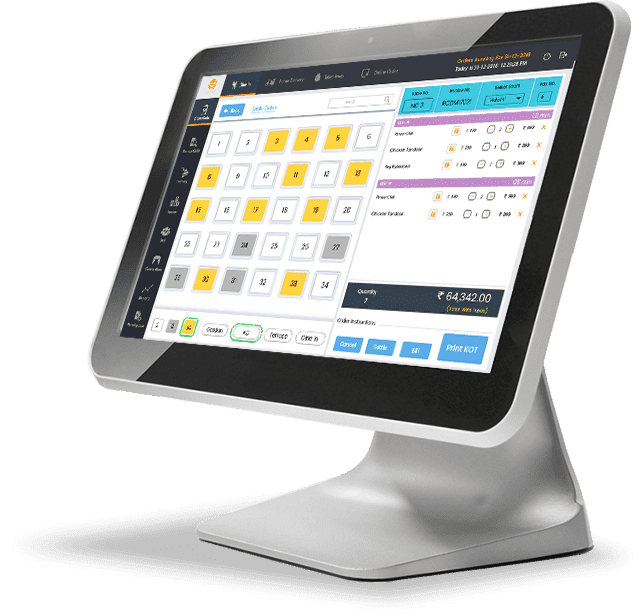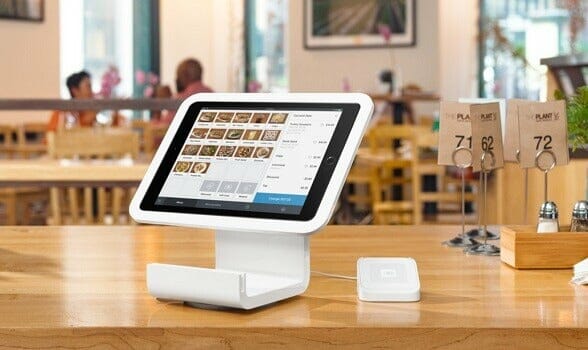Signs it’s time to upgrade to Restaurant POS Software?
Wiki Article
Exactly How POS System Functions: A Comprehensive Overview for Organization Owners
A POS system functions as a crucial device for modern companies, integrating different parts to streamline operations. It includes equipment like barcode scanners and software available for sale monitoring. This system not just refines purchases but also handles stock and assesses consumer behavior. Comprehending its performance can significantly affect a company's efficiency and decision-making. What are the key elements that add to this performance? Checking out these elements provides useful understandings.Comprehending the Components of a POS System
A Factor of Sale (POS) system is made up of a number of key parts that function together to help with transactions and manage company procedures. At its core, the equipment includes tools such as a sales register, barcode scanner, invoice printer, and payment incurable, all essential for refining sales (Restaurant POS Software). The software program element manages supply, sales tracking, and consumer information, offering valuable understandings for company decisions.Additionally, databases keep transaction documents and customer details, making sure data honesty and safety and security. Network connectivity makes it possible for real-time updates and access to cloud-based solutions, improving operational performance. Individual interfaces, designed for convenience of use, permit staff to browse the system quickly, minimizing training time. Together, these parts create a natural system that streamlines the sales procedure, boosts client service, and aids in efficient management of organization resources. Comprehending these components is crucial for local business owner looking for to maximize their POS systemsExactly How Sales Deals Are Processed
When a customer makes a decision to purchase, the sales transaction launches a collection of systematic actions within the POS system. First, the cashier inputs the items being purchased, which are scanned with a barcode reader or manually entered. This action obtains item details, consisting of rates and applicable tax obligations, from the system's database.Next, the customer exists with the overall quantity due. The POS system after that refines the settlement, whether via cash money, charge card, or mobile repayment techniques. For electronic settlements, the POS securely interacts with repayment cpus to accredit and validate the transaction.Once the repayment is verified, the system creates a receipt, which can be printed or sent digitally. This invoice works as receipt for the client. The purchase information is videotaped in the system, ensuring accurate sales records and financial tracking for the business.Inventory Management and Tracking
Efficient supply monitoring and tracking are vital components of a POS system, as they assure that services preserve perfect stock degrees and lessen inconsistencies. A durable POS system permits real-time inventory updates, mirroring sales and returns instantly. This enables organization owners to monitor supply levels properly, making certain that prominent products are conveniently available while preventing overstocking of less preferred products.Additionally, advanced POS systems offer functions such as automated supply notifies and reorder recommendations, streamlining the procurement process. Barcoding and RFID modern technology enhance precision in tracking inventory motion, lowering human error. Considerable reporting tools provide understandings right into supply turn over rates, assisting services make notified decisions regarding purchasing and item offerings. Eventually, effective supply administration through a POS system not just improves functional effectiveness yet likewise enhances client fulfillment by guaranteeing item schedule.
Examining Consumer Data and Insights
Customer data evaluation functions as a powerful device for services using a POS system. By accumulating and checking out transaction data, businesses can discover beneficial insights regarding consumer actions and choices. This evaluation enables them to recognize buying patterns, peak shopping times, and prominent products, thus informing supply choices and advertising and marketing strategies.Additionally, businesses can sector their client base, allowing for individualized advertising efforts that deal with specific demographics or acquiring practices. Understanding client loyalty patterns also helps in creating targeted promos and benefits programs.The data amassed from a POS system can additionally expose insights right into consumer comments, enabling companies to make educated choices concerning item offerings and service enhancements. Ultimately, leveraging official statement client information efficiently can improve the general buying experience, foster client satisfaction, and drive income growth.
Advantages of Implementing a POS System
Executing a POS system provides various advantages that can considerably enhance organization procedures. To start with, it streamlines transaction procedures, reducing delay times and boosting customer satisfaction. By automating sales procedures, organizations can decrease human error and guarantee accurate record-keeping. In addition, a POS system gives useful information analytics, allowing owners to track sales trends and inventory degrees in real-time. This understanding supports informed decision-making, helping to maximize supply administration and marketing strategies.Moreover, several POS systems incorporate with other see this site company tools, such as accounting software program, streamlining monetary management. Boosted staff member administration features, such as tracking hours and efficiency, additional contribute to functional efficiency.Lastly, the application of a POS system can lead to raised profits with improved consumer experiences and calculated insights, inevitably promoting service development and sustainability.
Often Asked Questions
What Sorts Of Organizations Can Gain From a POS System?

Just how much Does a POS System Typically Price?
The expense of a POS system commonly ranges from a couple of hundred to a number of thousand dollars, relying on features, hardware, and software application - Restaurant POS Software. Companies must consider continuous fees for maintenance, assistance, and transaction processing when budgeting
Can I Integrate a POS System With Existing Software?
Incorporating a POS system with existing software application is often possible. Lots of systems provide APIs or built-in compatibility attributes, allowing businesses to simplify procedures and boost functionality by attaching various software application applications effectively.What Training Is Needed for Staff to Make Use Of a POS System?
Training for personnel to use a POS system generally includes understanding software application functionalities, refining you can check here deals, handling supply, and taking care of customer communications - Restaurant POS Software. Practical demos and hands-on practice enhance proficiency and confidence being used the system efficientlyWhat Occurs if the Internet Drops While Making Use Of a POS System?
If the web drops throughout POS system usage, deals might be disrupted. Numerous systems provide offline capabilities, enabling standard operations to proceed, however complete functionality, consisting of real-time stock updates, will be limited.Report this wiki page